
Can You Grow Ariocarpus?
It's autumn and the ariocarpus are in bloom. Typical of cacti, they do it spectacularly. But atypical of cacti, ariocarpus are not easy to grow. Unless you live in Texas or northeastern Mexico, forget about growing them out in the open. Yet give these stacked-looking cacti a Texas mudflat, and they settle right in.

Ariocarpus retusus
Ariocarpus in habitat
The only evidence of an ariocarpus' presence in habitat may be a multi-pointed star outlined in sunbaked sand. Their large beet-like roots shrink during the dry season, pulling the plant down into the ground. Burying themselves in this lithops-like way helps ariocarpus conserve moisture and discourages thirsty predators. Yet considering how these succulents resemble piped frosting with whipped cream, such concealment seems a shame.
Ariocarpus care
You'll likely need a cold frame or greenhouse to keep ariocarpus warm and dry in winter. To me that's too much trouble, but serious collectors are OK with it. And that brings me to the point (no pun intended) of this post: You needn't bother actually growing ariocarpus, because you can see fantastic specimens at shows.
Where to see ariocarpus
Certain specialty nurseries offer ariocarpus, notably CA Cactus Center in Pasadena. Also view mature plants at Cactus & Succulent Society Shows. Southern CA collector-grower Peter Walkowiak typically brings a half dozen prime specimens to the Palomar C&S Show at the San Diego Botanic Garden. The event is held annually the last weekend in October, which coincides with ariocarpus' bloom season.
What's the white stuff?
Ariocarpus are among those fascinating cacti that produce fine white filaments. Although such wool likely protects the plant's vital core from scorching sun, and it may even collect dew, it's actual purpose is open to debate. It certainly does make the plants memorable.
Ariocarpus at a glance
- Ball-shaped cacti resemble asteroids
- Tuberous roots are vulnerable to overwatering
- Native to Texas and northern Mexico
- Stems (tubercles) are triangular or conical
- Depending on the species, tubercles may curve upward
- Skin may be smooth, or fissured and crinkly
- Low-growing. May be nearly buried in habitat
- Prefers rocky, sandy, coarse, fast-draining soil
- Size (at great age): about six inches high by a foot wide
- Seldom produce offsets. Propagate by seed
- No spines, but stiff tubercles have points
- Notoriously slow-growing
- Colors vary from pale gray through shades of green
- Needs strong sunlight
- Water only during the summer growing season
- Main bloom time is fall
- Showy flowers are magenta, pink, cream or yellow
Your opinion please
Do you have an ariocarpus story, tip or question? Kindly scroll down and tell us in the comments! And if you think I've ID'd a plant incorrectly or need to give credit where due---here or anywhere on my site---please let me know. Thanks, Debra
Ariocarpus Gallery
Cactus: Details, Photos and Varieties
Cactus Care, Gallery and Names All cacti are succulents, but not all succulents are cacti. They’re not for everyone, but once hooked (forgive the pun) you’ll collect more and more. See All Succulent Types Aeonium Agaves Aloes Cactus Crassula Echeveria Euphorbias Ice Plants Kalanchoe Portulacaria Senecio About Cacti Native to deserts and dry regions of…

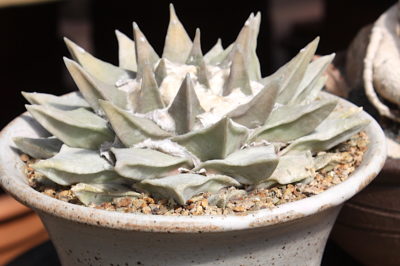


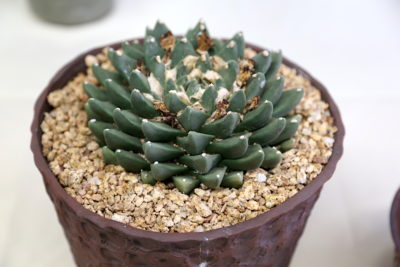









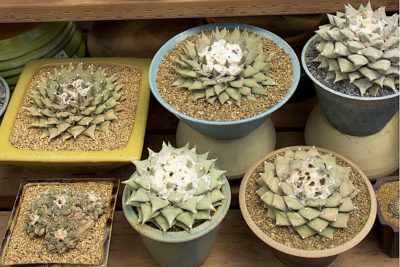






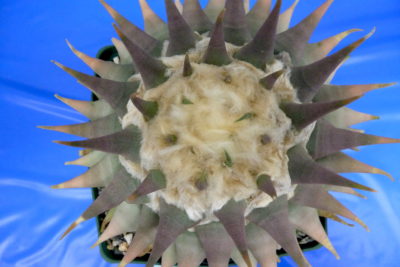

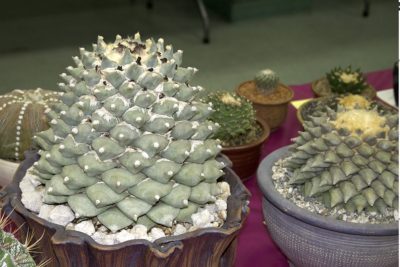


These are beautiful. They remind this Wisconsin girl of snow covered conifers.
I recently read all of Succulents Simplified on a train trip to Baltimore. Your information is thorough and readable. Much appreciated. And the pictures! Amazing!
Thanks for educating this newbie to succulents!
Annie, thank you!! What a lovely comment.
So is south east San Diego close enough to north Mexico to be able to grow Airocarpus if I provide cover from rain in the winter?
Hi Karen — Hm. I’d better change the text to read “northeastern Mexico.” Yes, you can grow ariocarpus, just not where they’ll get cold and wet in winter. I’ve seen them growing happily in a cold frame in the back yard of a private residence in San Diego’s North County. Also at CA Cactus Center (Pasadena) and Peter Walkowiak’s, in pots atop tables, open to the air but beneath a translucent roof. Next time I see Peter, hopefully at the show, I’ll ask him for more detailed info.
I have two different ariocarpus I keep outside year around in pots in my back porch in Tucson, AZ. I never knew what they were until I read this newsletter. Cool. Thanks for all the great info you share.
Hi Karen,
I guess I have been lucky. I live in coastal central CA and have all 6 of my various ariocarpus outside. My 2 retusus flowered this year in full southern exposure. I water about every two to three weeks. I do have them in a heavy pumice soil mix. Maybe Inshould move my other’s to my mother’s greenhouse. Thanks
Hi Debralee I’ve followed you for @ least 17yrs!! But I’m from Australia & there’s no sense in myself doing your surveys!!, I’ve done them a few times, knowing I’ll never win anything!! So have stopped again !!
We in Australia have been in a bad drought for over10yrs & this year there’s no feed for animals
I listen @ night to radio & a poor farmer rang & said, he had just killed 80 of his cattle!! & then said there’s one bullit left & that’s for me! If no rain happens!! Our government is not helping any farmers it’s a bad crises & suicide is on the up
About entering it seems useless as it’s mainly your American audience, no it’s always the Americans who win anything! I won’t go in any more? And that’s ok I just want to learn how to make more esucculent rockeries!! So anytime you can show them much appreciated!! From us drought affected Australia
Hi Lea — My heart goes out to you. I wish it were possible to send you a calendar or at the very least give you a hug. What a crisis Australia is going through! I was aware of the ongoing drought (and subsequent wildfires), but your comment vividly makes it all real. As for succulent rockeries, I’d love to discover and show more. Will certainly keep it in mind. In the meantime, you might enjoy my post: “Ten Reasons You Really Need Rocks.” I’ll also be emailing you directly.
how about growing them in south Florida?
Yes, anything is possible if you can replicate a plant’s ideal growing conditions…which for you would be a very dry greenhouse. Unfortunately arid-climate plants like cactus tend to be challenging to grow in Florida and other tropical regions. The plants don’t like damp air and are prone to fungal diseases and rot.